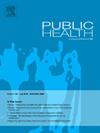脑卒中后康复中的社会不平等:卫生保健差距方法
IF 3.9
3区 医学
Q1 PUBLIC, ENVIRONMENTAL & OCCUPATIONAL HEALTH
引用次数: 0
摘要
目的中风仍然是世界上最大的疾病负担之一。康复是治疗的一个重要组成部分,有可能弥补个人后果和社会成本。为确保及时评估康复需求并向患者和专业人员提供有关其重要性的信息,已经付出了大量努力。尽管如此,只有不到一半的中风患者参加康复治疗,原因也知之甚少。本研究旨在调查患者和提供者引发这种潜在不平等的原因。研究设计:基于人群数据的登记研究。方法:本研究纳入了2014年至2018年间丹麦的所有脑卒中患者(N ~ 70000),我们对这些患者进行了个体水平的联系,以登记患者特征、卫生服务利用以及社会人口统计信息的数据。提供者方面的康复通过发布康复计划来表示,而需求(依从性)则定义为患者使用的康复服务单位。丹麦中风登记册保存着有关损伤相关因素的信息,例如严重程度,并使我们能够得出康复需求的衡量标准。因此,我们可以估计预期的康复需求,并应用卫生保健差距(HCG)方法来分析社会经济患者水平和提供者水平的潜在不平等的驱动因素。结果5年随访期间共发生70173例脑卒中事件,其中41%在出院时接受了康复计划。在接受康复计划的一组中,81%的人参加了康复。严重程度高、丹麦裔、居住在首都地区以外、领取养老金者增加了提供者医疗保健差距;而年轻、男性、较长的停留时间、居住在首都地区和就业则增加了出勤率差距。结论年龄和严重程度以及社会人口学特征(教育程度和居住地)对提供者-医疗保健差距和出勤-医疗保健差距都有影响。卒中后康复的提供和参与似乎都有可能得到改善。一些社会人口特征可能成为康复的障碍,在规划康复服务时应着重加以注意。本文章由计算机程序翻译,如有差异,请以英文原文为准。
Social inequality in rehabilitation after stroke: a health care gap approach
Objectives
Stroke remains one of the largest burdens of disease in the world. Rehabilitation is an essential component of the treatment, with the potential to remedy the individual consequences and societal costs.
Much effort has been put into securing timely assessment of rehabilitation needs and providing information to patients and professionals about the importance. Despite this, less than half of stroke patients participate in rehabilitation and little is known about why. This study aims to investigate patient and provider triggers for this potential inequality.
Study design
Register-based study on population-based data.
Methods
This study includes all stroke patients in Denmark between 2014 and 2018 (N ∼ 70,000), for which we conduct individual-level linkage to register data on patient characteristics, health service utilisation, as well as sociodemographic information. Provider-side rehabilitation is signalled by the issuing of a rehabilitation plan, while demand (compliance) is defined as units of rehabilitation services utilized by the patient. The Danish Stroke Register holds information on injury-related factors, e.g. severity, and allows us to derive a measure of the need for rehabilitation. Thus, we can estimate the expected need for rehabilitation and apply the health care gap (HCG) approach to analyse the socioeconomic patient-level and provider-level drivers of potential inequality in rehabilitation.
Results
There were 70,173 stroke events during the five years of study, of which 41 % received a rehabilitation plan upon discharge. In the group who received a rehabilitation plan, 81 % attended rehabilitation. High severity, Danish origin, living outside the capital area, and being an age pensioner increased the provider health care gap; while young age, male gender, longer length of stay, living in the capital area and employment increased the attendance-gap.
Conclusions
We find that age and severity along with sociodemographic characteristics (education and place of residence) impact both provider-health care gap and attendance-health care gap. There appears to be a potential for improving both provision and participation in rehabilitation after a stroke. Some sociodemographic characteristics may act as barriers to rehabilitation and should be focused on in the planning of rehabilitation services.
求助全文
通过发布文献求助,成功后即可免费获取论文全文。
去求助
来源期刊

Public Health
医学-公共卫生、环境卫生与职业卫生
CiteScore
7.60
自引率
0.00%
发文量
280
审稿时长
37 days
期刊介绍:
Public Health is an international, multidisciplinary peer-reviewed journal. It publishes original papers, reviews and short reports on all aspects of the science, philosophy, and practice of public health.
 求助内容:
求助内容: 应助结果提醒方式:
应助结果提醒方式:


